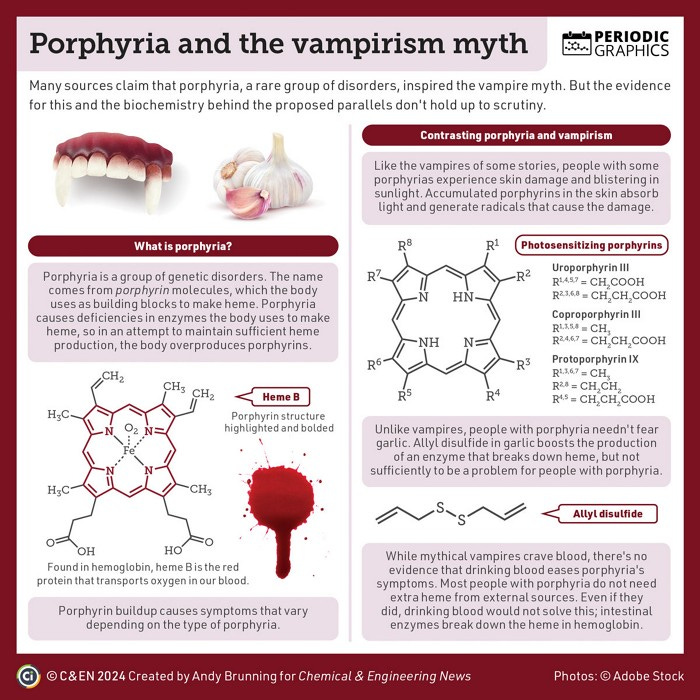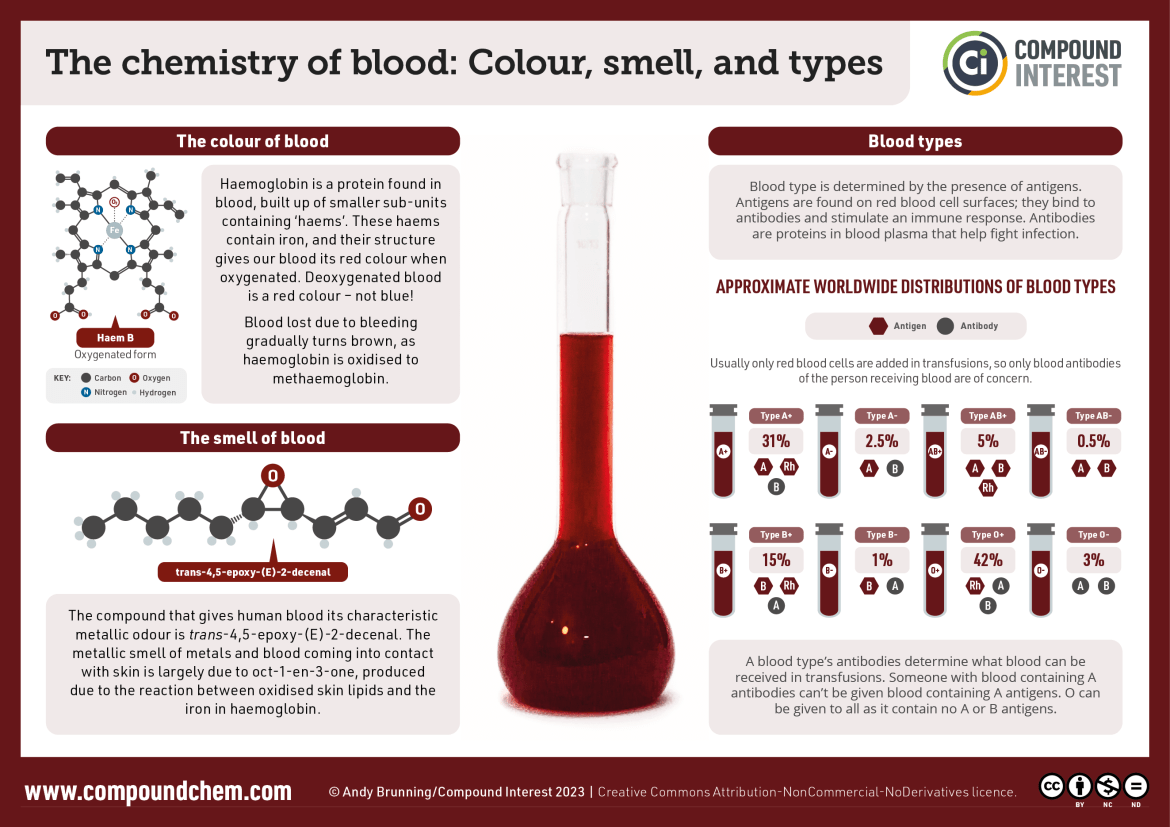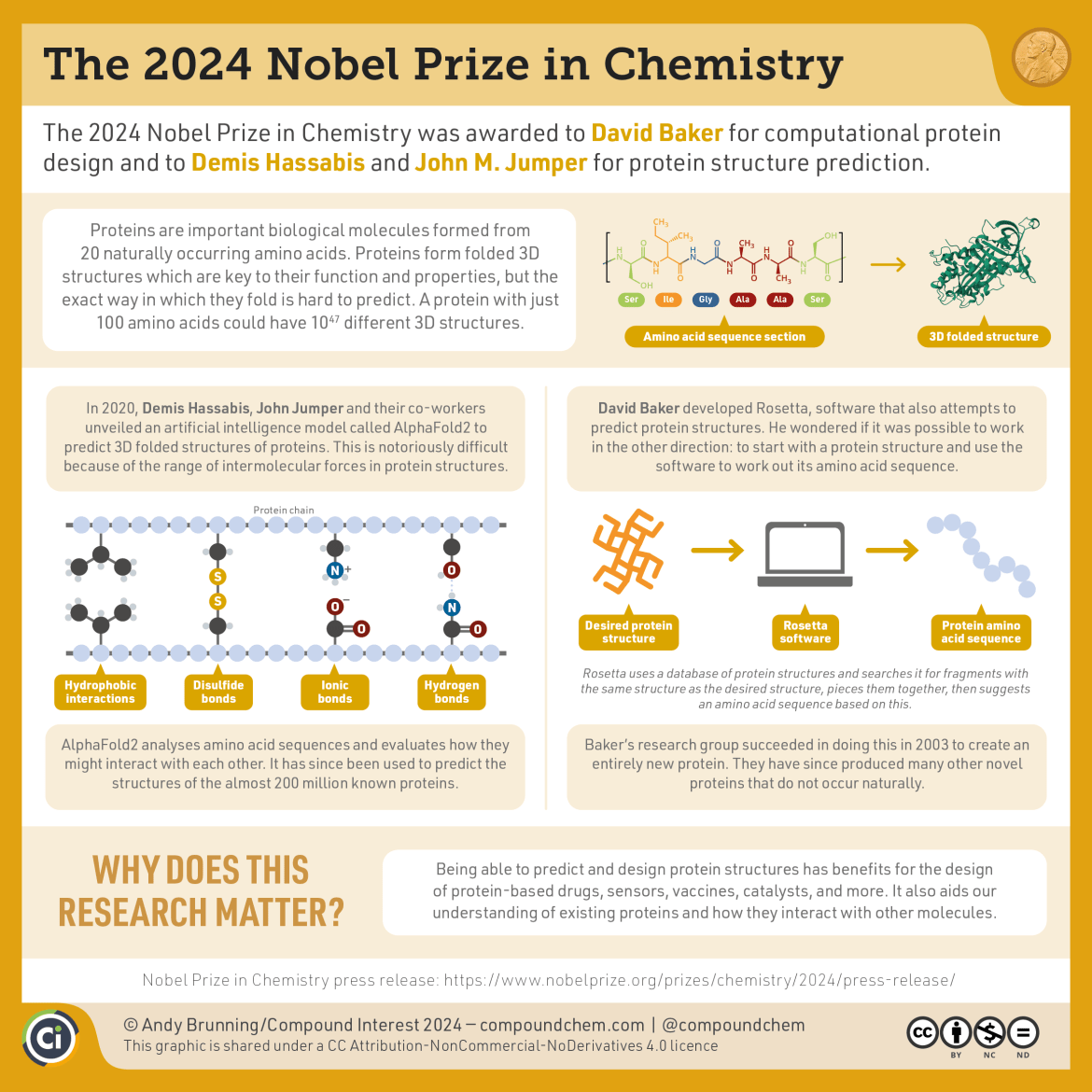Welcome to a Halloween special of the Periodycal newsletter! This edition is packed with Halloween chemistry infographics, old and new. From vampirism to candy corn, skeletons to spider webs, there’s something spooky for all. Plus there’s the usual round-up of chemistry news stories that I’ve found interesting and more!
Vampirism: Not inspired by porphyria
When it comes to myths and monsters, we like to try to rationalise the superstitions of old and come up with logical explanations that are more grounded in fact. Sometimes, though, these explanations aren’t the perfect fit and can even create stigmatisation.
A classic case in point is the conflation of porphyria, a group of genetic disorders, with vampirism. Many sources claim that porphyria inspired the vampire myth, but the evidence for this and the biochemistry behind the proposed parallels doesn’t hold up to scrutiny.
In fact, the link between vampirism and porphyria appears to have been largely stoked by one man, David Dolphin, a porphyrin chemist. In 1982, in a talk at the Royal Society, he postulated the link, and followed this up with numerous other talks and interviews.
As this edition of Periodic Graphics shows, in reality, there’s little to tie porphyria and vampirism together, and this story highlights that science communicators should perhaps think twice before tying real diseases to mythical monsters.
Halloween chemistry compilation
For more Halloween chemistry, we’ve built up quite the archive in Periodic Graphics over the past few years:
Aside from Periodic Graphics, there’s also this graphic on the chemistry of blood.
The Nobel Prize in Chemistry 2024
Earlier in the month this year’s Nobel Prizes were awarded. The 2024 Nobel Prize in Chemistry was awarded to research that uses artificial intelligence to predict protein structures, as well as using similar AI models to design proteins that don’t occur naturally. The key points are summarised in this infographic.
Chemistry news and features
Here’s the regular selection of chemistry news and features I’ve found interesting over the past few weeks:
Sulfur hexafluoride in old shoes – I didn’t realise before reading this that Nike used to pump sulfur hexafluoride gas into the soles of their trainers to provide additional cushion. If you don’t know, sulfur hexafluoride is a greenhouse gas thousands of times more potent than carbon dioxide. This article highlights issues in the carbon offset approach Nike uses today related to their historic use of sulfur hexafluoride, (which frankly went a little over my head).
Traces of tobacco in bones reveal details of 18th Century smokers – Recent research looked at compounds left behind in bone as a result of tobacco smoking. Their results unsurprisingly showed a much higher rate of smoking in the 1700s and also showed women smoked much more than contemporary sources suggest.
That’s all for this edition of Periodycal. Coming up on the website this month are further infographics on mushroom chemistry and more!
Thanks for reading,
Andy








